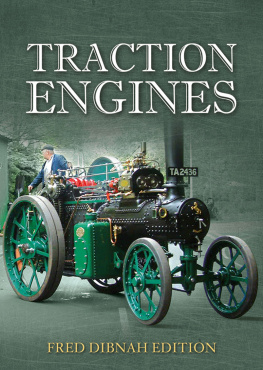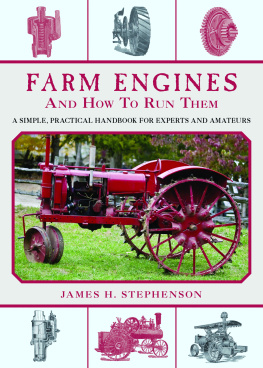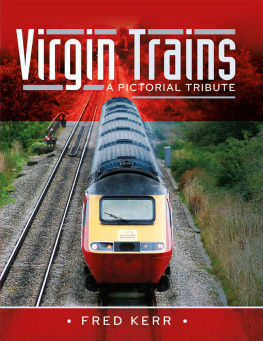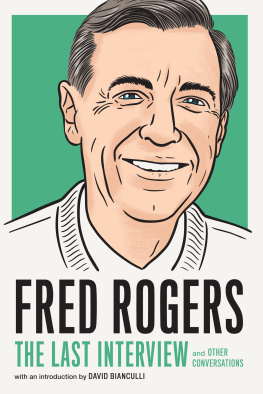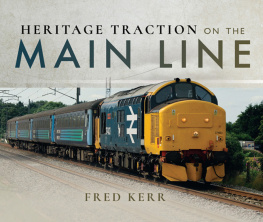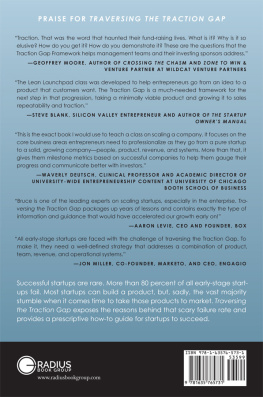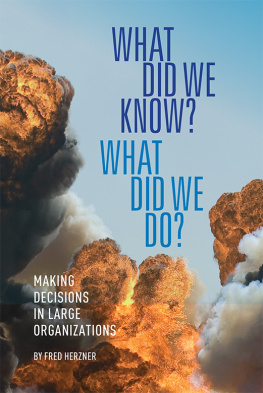Fred Dibnah - Traction Engines
Here you can read online Fred Dibnah - Traction Engines full text of the book (entire story) in english for free. Download pdf and epub, get meaning, cover and reviews about this ebook. year: 2020, publisher: G2 Rights Ltd, genre: Non-fiction. Description of the work, (preface) as well as reviews are available. Best literature library LitArk.com created for fans of good reading and offers a wide selection of genres:
Romance novel
Science fiction
Adventure
Detective
Science
History
Home and family
Prose
Art
Politics
Computer
Non-fiction
Religion
Business
Children
Humor
Choose a favorite category and find really read worthwhile books. Enjoy immersion in the world of imagination, feel the emotions of the characters or learn something new for yourself, make an fascinating discovery.
- Book:Traction Engines
- Author:
- Publisher:G2 Rights Ltd
- Genre:
- Year:2020
- Rating:3 / 5
- Favourites:Add to favourites
- Your mark:
- 60
- 1
- 2
- 3
- 4
- 5
Traction Engines: summary, description and annotation
We offer to read an annotation, description, summary or preface (depends on what the author of the book "Traction Engines" wrote himself). If you haven't found the necessary information about the book — write in the comments, we will try to find it.
Traction Engines — read online for free the complete book (whole text) full work
Below is the text of the book, divided by pages. System saving the place of the last page read, allows you to conveniently read the book "Traction Engines" online for free, without having to search again every time where you left off. Put a bookmark, and you can go to the page where you finished reading at any time.
Font size:
Interval:
Bookmark:

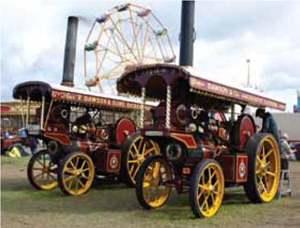
Design and artwork by: ALEX YOUNG
Published by: G2 ENTERTAINMENT LIMITED
Publishers: JULES GAMMOND AND EDWARD ADAMS
Written by: STEVE LANHAM
ISBN 9781782819271
I n terms of publicising in televisual form the steam preservation scene, chronicling the history of steam power and explaining its effects on industry, nobody generated as much interest as the late Fred Dibnah.
He was born just prior to World War II in a time when Britain was one of the worlds leading engineering nations. Heavy industry dominated the largest cities that pulsated to the sounds of the mill, factory and foundry producing goods essential to the countrys economy. Every manufacturing premise relied on some form of localised energy source to provide power for the machinery and if a water wheel was not an option, steam was generally the preferred alternative. Growing up amongst such an environment had a profound effect on the young Fred and in his adolescent years an inquisitive nature and a desire to learn about mechanical processes would lead him to occasionally break into disused buildings, just to get a better look at the workings and, if possible, the steam engines.
His interest in steam was born out of watching those clanking giants, the locomotives of the London Midland & Scottish Railway that hauled raw materials, commodities and of course passengers in and out of his home town of Bolton - renowned for its textile making and bleachworks. He was even once given the opportunity to fire a scheduled train, thus cementing a life-long passion for steam-powered vehicles.

Fred Dibnah standing beside the National Railway Museums Rocket, designed by one of Freds heroes, Robert Stephensont
It was the manufacturing industries, however, that would later in life provide Fred with a steady but rather unusual form of income. After the war, firms made greater use of electricity to run machinery and the original purpose of the engine house was gradually changed as stationary engines became redundant. In consequence there was little or no use for the tall chimneys designed to emit noxious fumes high above and away from the city residents, and steeplejacks were employed to dismantle them. Fred was fascinated by the men who would use rudimentary ladders to climb the outside of the stack and dismantle much of the top superstructure before final demolition could take place. The latter was done by removing brickwork at the base of the chimney and supporting that area with wooden shoring. With an adequate space cleared for falling masonry, a fire would be lit around the wooden props and as they began to splinter and disintegrate, so the chimney would collapse the idea being that whichever side the aperture had been created would be, in theory, the direction in which the structure would fall. Of course, it did not always go to plan and in several cases, compensation was required in payment for damages caused to adjacent property!
After completing his National Service in West Germany, Fred joined forces with Lonsdale Bonner, one of Freds former teachers at art college. Bonners role in the partnership was to secure work in return for a small commission, whilst Fred would perform the hard graft. Fred had already developed a good head for heights when at the tender age of 17, won a bet by climbing the 80 metre high Barrow Bridge chimney in the middle of the night to attach a pair of Union Flags at the top, and in doing so, making the front page of the Bolton Evening News. During the late-1950s and 1960s work started to come Freds way and a lone figure could regularly be seen way up above the factory roofs, repairing a dilapidated structure or preparing it for a final and undignified demise. He was also contracted to maintain many of the areas church towers and spires and struck up friendships with a number of the local clergymen and their parishioners.
The traditional way in which Fred felled chimneys and of course this most unusual way of making a living brought him to the attention of the BBC who produced an extremely fascinating and absorbing insight into the life of the steeplejack, recording the day-to-day job of this most unassuming demolition man. The 1979 British Academy Award winning documentary, Fred Dibnah: Steeplejack culminated in Fred giving with a hoot of a horn warning to the assembled bystanders of the buildings imminent collapse followed, in the aftermath and subsequent cloud of dust and smoke, by his immortal words,

Freds KND Class convertible engine which featured in the television series, Made in Britain
Did ylike that?
The initial programme and spinoff series, A Year with Fred, not only demonstrated what a lonely existence it could be to laboriously take a stack down brick-by-brick with only his own thoughts for company, but also showed Freds passion for the achievements of his engineering ancestors and a sadness for an industrial landscape that quite evidently was quickly disappearing. In this way, he developed an enthusiasm for renovating and preserving as many elements from the Victorian age as possible. Indeed the items he accumulated in and around his mid-19th Century house in Radcliffe Road was a small testament to the era we know today as the Industrial Revolution. It was also a tribute to the men who advanced the worlds manufacturing processes and pioneered modern transport links, one of those celebrated individuals being Isambard Kingdom Brunel who would remain one of Freds all-time heroes.

Fred Dibnahs love of steam originated from watching the great railway locomotives that served his home town of Bolton
Between demolishing factory chimneys and maintaining church towers in and around Bolton, Fred was shown driving his 1912 Aveling & Porter 12-ton roller No.7632 Alison, (later renamed Betsy after his late-mother) and restoring another Aveling of 1912, KND Class convertible traction engine No.7838.
In more recent times, he presented Fred Dibnahs Industrial Age, Age of Steam and The Building of Britain extolling the countrys architectural and engineering heritage, and for all his efforts was awarded an MBE in the 2004 New Years Honours List. A fortnight after meeting the Queen at Buckingham Palace, he was made an honorary Doctor of Technology by the University of Birmingham.
Also in 2004, Fred dismantled his last chimney, that of the Park Mill cotton works at Royton, a town within the Metropolitan Borough of Oldham. Only three years earlier he had been diagnosed with a tumour in his right kidney and although this was successfully removed, other growths were detected in due course. As his health deteriorated, Fred looked to other ways to occupy his time. In 2003, he was joined by friend Alf Molyneux, and sons Jack and Roger on an epic journey by traction engine around the countrys major industrial landmarks for a new series called Made in Britain. It was a gruelling schedule that took its toll on Fred and although filming had to be suspended after only half of the programs had been made, he recovered enough to complete the project. Nevertheless, it would prove to be yet another successful series and a fitting finale to an incredibly interesting and varied life.
Font size:
Interval:
Bookmark:
Similar books «Traction Engines»
Look at similar books to Traction Engines. We have selected literature similar in name and meaning in the hope of providing readers with more options to find new, interesting, not yet read works.
Discussion, reviews of the book Traction Engines and just readers' own opinions. Leave your comments, write what you think about the work, its meaning or the main characters. Specify what exactly you liked and what you didn't like, and why you think so.

